Abstract 8/2020
Table of content
Andrzej Bąk – Analysis of pedestrian accessibility to the agglomeration fast railway (SKA) station in Małopolskie Voivodeship
Natalia Czołgosz, Daniel Karpowicz, Klaudia Berus – Impact of floor height on the time of passenger exchange in trams
Jakub Kaczorowski, Marcin Pinkosz – Transport and revitalisation – the impact of the construction of metro on the Targówek Mieszkaniowy in Warsaw
Adam Machelski, Bartosz Grzeczka – Multi-criteria analysis of the division of the Poznań city into areas with locations designated for installation and operation of electric vehicle charging stations
Bartosz Rydel, Patryk Chwedczuk – Solving the problem of changing the traction in the context of operation of the access rail
Abstracts
Andrzej Bąk
Analysis of pedestrian accessibility to the agglomeration fast railway (SKA) station in Małopolskie Voivodeship
Abstract: Appropriate space planning can improve transport accessibility, especially so-called spatial accessibility. The purpose of the article is to estimate the number of people living within the range of an acceptable pedestrian access to the Fast Agglomeration Railway (SKA) stations of the Krakow agglomeration. The article discusses the types of transport accessibility. The research method using free and open software and a source of publicly available data has been presented. The results of the analysis for the SKA rail-system have been described and discussed. The importance of individual stations in the system was assessed in terms of pedestrian access. The significance of the agglomeration railway for individual municipalities was also shown.
Key words: transport accessibility, railway transport, gis
Natalia Czołgosz, Daniel Karpowicz, Klaudia Berus
Impact of floor height on the time of passenger exchange in trams
Abstract: The article presents the effect of researches conducted on different types of trams of the Municipal Transport Company (MPK) in Wrocław. The research was carried out on the trams Skoda 16T and 19T, Moderus Beta, Konstal 105NaWr, Protram 205WrAS, on many lines and stops in Wrocław, at different times of day. Analysis of the results showed that this impact is not significant.
Key words: high-floor tram, low-floor tram, passenger exchange
Jakub Kaczorowski, Marcin Pinkosz
Transport and revitalisation – the impact of the construction of metro on the Targówek Mieszkaniowy in Warsaw
Abstract: Targówek Mieszkaniowy is one of areas of Warsaw struggling with road congestion, lack of job opportunities and a long travel time to the centre. The part of the area has been covered by the Integrated Revitalization Program, thanks to which a number of activities in the social and infrastructural spheres are carried out. In September 2019, next section of the second line of the Warsaw Metro was opened, which improved the accessibility of the area by public transport. The authors analyse the condition before the metro was put into operation, as well as the possibilities offered to Targówek Mieszkaniowy to access a new form of transport in the context of revitalization. In December 2019, a survey was conducted among the residents of the area regarding the metro and associated issues, questions have also related to knowledge of revitalization issues. Many answers came as a surprise to the authors and allowed them to look at the changes carried out in the area from a different perspective. This has resulted in conclusions which can be used as recommendations for the city authorities for further actions.
Key words: metro, revitalization , public collective transport, Targówek Mieszkaniowy
Adam Machelski, Bartosz Grzeczka
Multi-criteria analysis of the division of the Poznań city into areas with locations designated for installation and operation of electric vehicle charging stations
Abstract: This article presents application of the methodology of multi-criteria decision support to determine the attractiveness of the location of publicly available vehicle charging stations on the example of the City of Poznań. The authors participated in the special team within the structures of the Municipality of Poznań, responsible for coordinating the activities of municipal units in the field of electro mobility, including developing a formula for selecting investors/operators for charging points. The team decided to divide potential locations of charging stations into equally attractive groups. Five criteria have been defined against which each location was assessed and then a model of preference for the decision-maker was defined. Using the ELECTRE III method, a final ranking was determined, ranked from best to worst and then allocated to the final groups.
Key words: multi-criteria decision support (WWD), ELECTRE III, electro mobility
Bartosz Rydel, Patryk Chwedczuk
Solving the problem of changing the traction in the context of operation of the access rail
Abstract: In recent years, efforts have been made to reduce as much as possible the harmful environmental impact of diesel traction vehicles. Therefore, when designing modern traction systems, designers try to minimize their discharge of diesel oil and lubricants by using modern internal-combustion engines. In recent years, other types of propulsion have also been sought, including a hybrid drive, in which the traction motors are powered from high-performance energy storage (battery cells, capacitors) or from storage tanks supported by energy generated by the current set installed on the locomotive – creative (internal combustion engine, AC generator, rectifier). The first hybrid vehicles have been created on the basis of cars, buses, trolleybuses and trams. It has only been a dozen or so years of work to develop a hybrid propulsion system with the use of locomotives most often intended for shunting and shunting traffic. In Poland, preliminary work on the creation of a hybrid propulsion system, in application to modernized diesel shunting locomotives, began in 2010.
Key words: rail, rail traction, hybrid, exhaust emissions, access rail

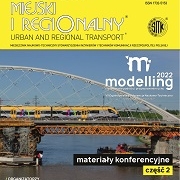 Wydawnictwa SITK RP
Wydawnictwa SITK RP 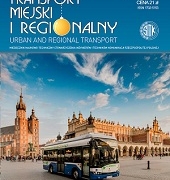
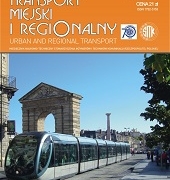 SITK RP
SITK RP 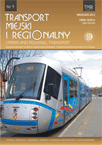 SITK RP
SITK RP 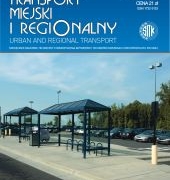 SITK RP
SITK RP 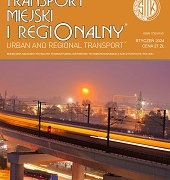 SITK
SITK 

